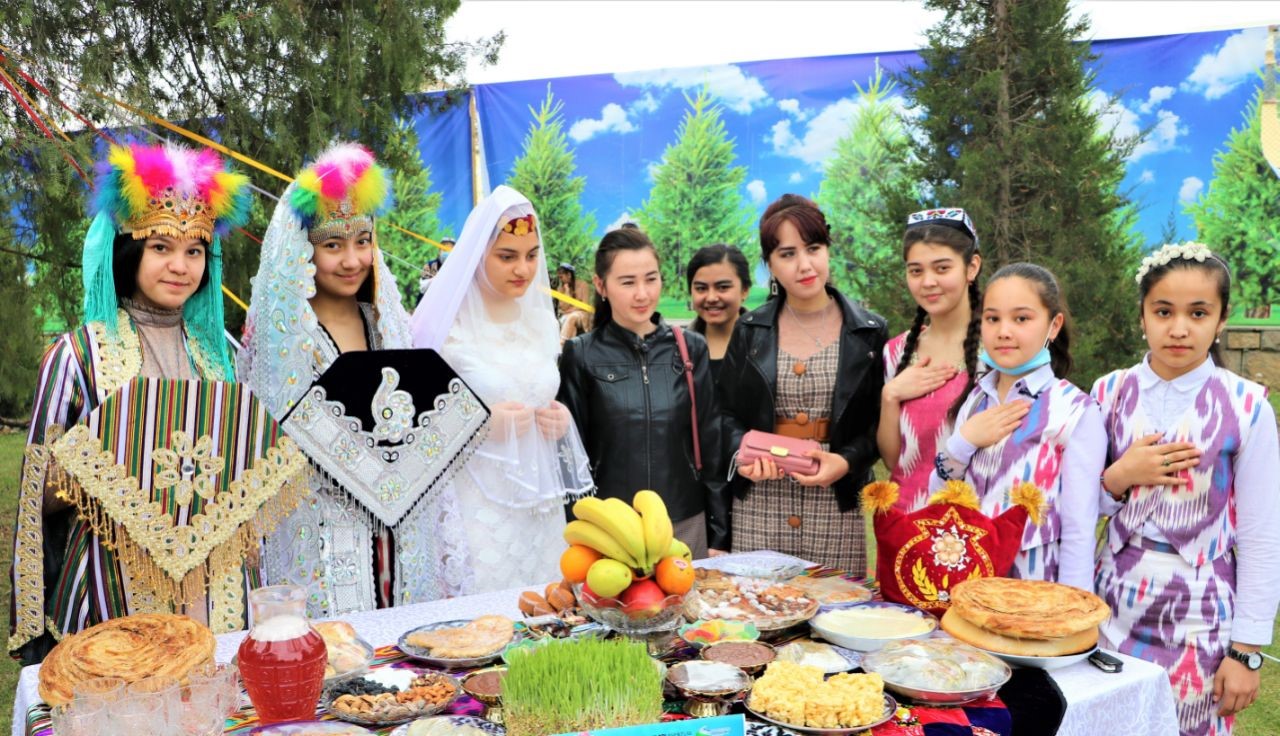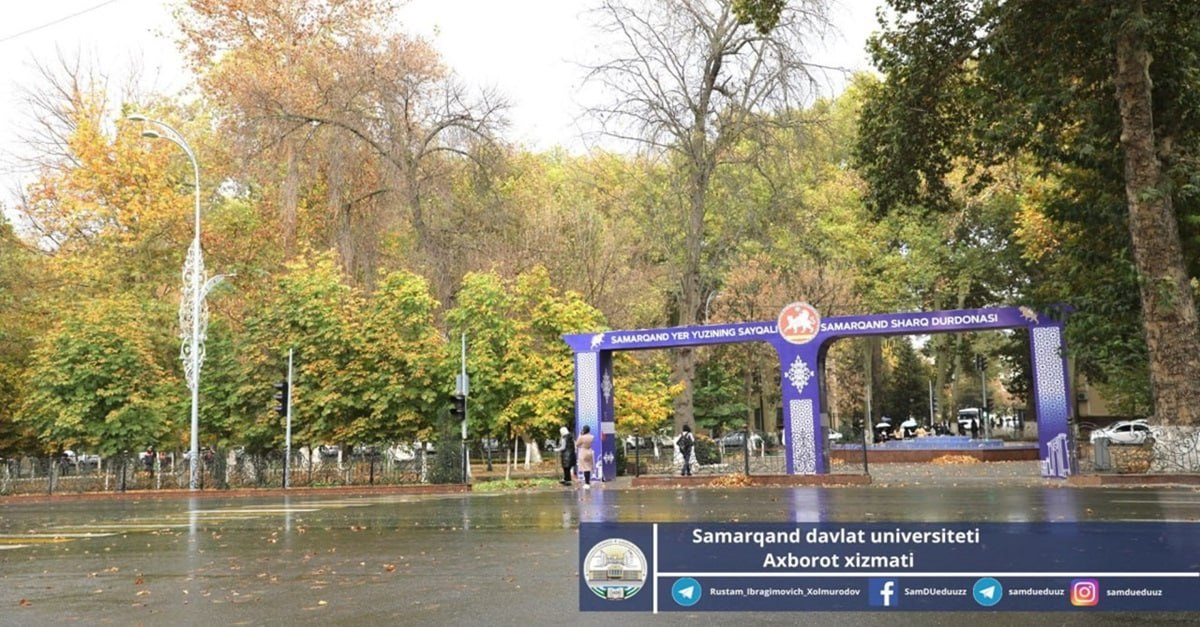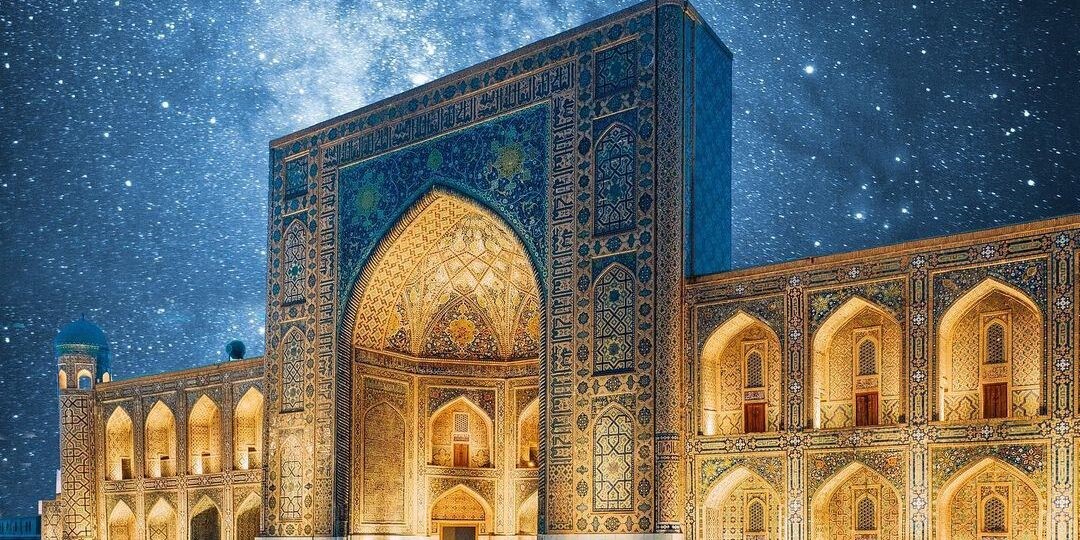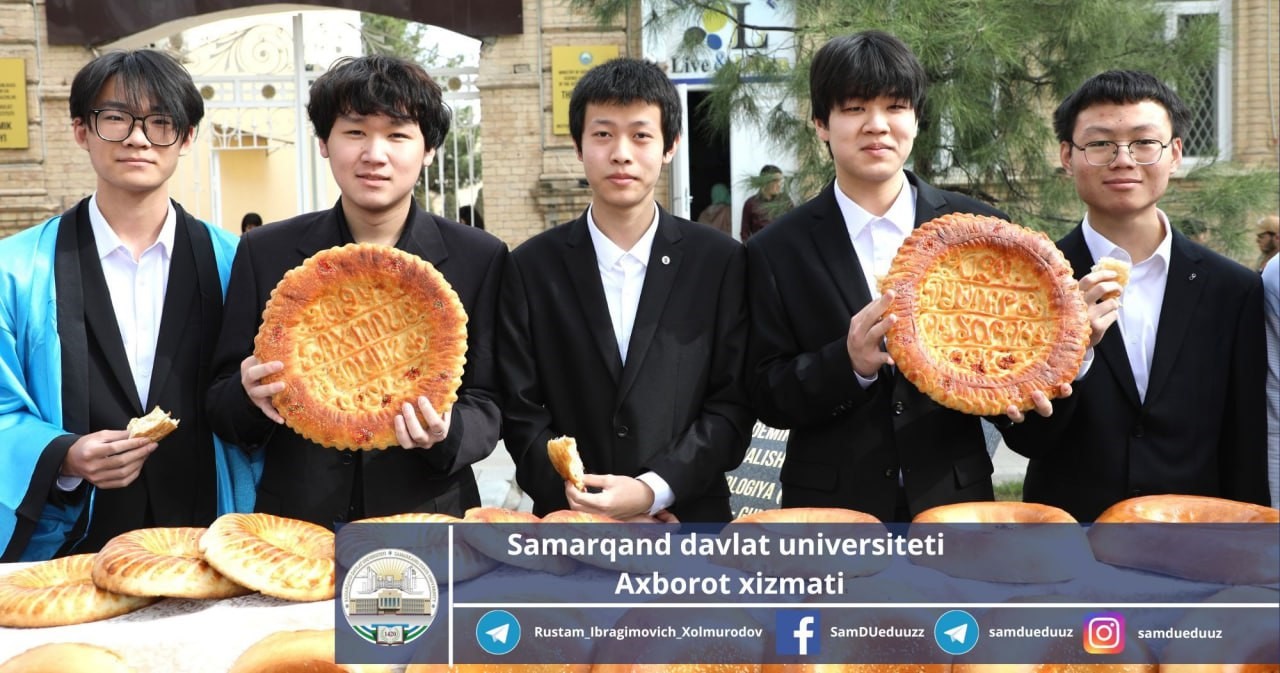Life in Samarkand
About Samarkand
Contents
Samarkand: A heritage city
Events and Festivals throughout the Year
Climate
Arts and Recreation
Life in Samarkand
The historic town of Samarkand is a crossroad and melting pot of the world's cultures. Founded in the 7th century B.C. as ancient Afrasiab, Samarkand had its most significant development in the Timurid period from the 14th to the 15th centuries. The major monuments include the Registan Mosque and madrasas, Bibi-Khanum Mosque, the Shakhi-Zinda compound and the Gur-Emir ensemble, as well as Ulugh-Beg's Observatory.
Photos of Monuments
Events and Festivals Throughout the Year
Samarkand is also known for its festivity throughout the year. Most of the inhabitants like dance and music. There are several holidays and festivals in Uzbekistan that celebrate the republic's history, culture, heritage, and beliefs. Here are details of Uzbekistan’s national holidays and some of the most popular festivals you can visit:
Day of defenders of the Native land (January, 14th)
Uzbekistan celebrates the creation of its armed forces under jurisdiction of the Republic of Uzbekistan on January 14, 1992.
Women's day (March, 8th)
An international holiday celebrating women, is also known as β€œMothers Dayβ€. The holiday coincides with the first days of spring and men give gifts and flowers to their mothers, wives and daughters.
Navruz (March, 21st)
The most ancient national holiday Navruz, meaning "new day", is considered the beginning of a new year. The date is spring equinox, when the length of day and night is identical. Many Uzbek families prepare national dishes including Sumalak, Halim, Somsa, Pilov and others. This holiday was revived in Uzbekistan after independence.

Day of memory and honour (May, 9th)
On May 9th, 1999 the Square of Memory was opened Tashkent, the capital of Uzbekistan. On the same day every year since the Day of memory and honour is celebrated to honour the memory of compatriots who protected Uzbekistan’s freedom and independence. National heroes include Tumaris, Shiroq, Spitamen, Jaloliddin Maguberdi, Najmiddin Kubro, Namoz-batir, Kadiri, Behbudi, Munavar-kori, Chulpon, Avloniy, Fitrat and Usman Nosir.
Boysun Bahori
Many local or provincial celebrations of spring take place in various parts of Uzbekistan. The biggest and perhaps the most culturally significant event is the Boysun Bahori. Held in mountainous Boysun in Surkhandarya Province, this festival dates back to pre-Islam times and features costumes, songs, dance performances, storytelling, and other local traditions which have withstood the test of time. This event is so steeped in the region’s history and culture that in 2001 UNESCO named the Boysun district as a Masterpiece of the Oral and Intangible Heritage of Humanity.
Independence Day (September, 1st)
Held every September 1, Independence Day is the biggest national holiday as the entire country remembers the day of independence and sovereignty after a long era of Soviet occupation. Feasts and shows are held in many cities and towns. At the Alisher Navoiy National Park in Tashkent, the president addresses the nation, after which performances from the country’s singers and actors take place, along with a large fireworks display.
Day of teachers and instructors (October, 1st)
In Uzbekistan the deep respect for teachers is celebrated each year. Students thank their tutors with flowers and gifts.
Constitution Day (December, 8th)
The constitution of the Republic of Uzbekistan was accepted by the Oliy Majlis (Legistlative chamber/Parliament) on 8th December, 1992. The constitution consists of 6 sections, 26 chapters and 128 article. This holiday is celebrated across all Uzbekistan, and carries out various actions, devoted to the constitution day.
New Year
Uzbeks have a particularly curious New Year festival called the Yillar. Traditions normally carried out during Christmas in other countries take place in Uzbekistan during the New Year. These traditions include putting up a fir tree with lots of decorations. Uzbeks also exchange gifts during this time and at some feasts, a man in a Santa costume joins in the merriment.
Climate

In Samarkand, the climatic conditions are categorized as mild and moderate. In Samarkand, precipitation is more abundant during the winter season compared to summer. This location is classified as Csa by Köppen and Geiger. In Samarkand, the mean yearly temperature amounts to 13.6 °C | 56.5 °F. In a year, the rainfall is 550 mm | 21.7 inch.
Samarkand is located in the northern hemisphere. The commencement of summer is observed at the conclusion of June and its culmination takes place in September. The months that constitute this season are known as June, July, August, and September. It is highly recommended that your stay a whole year.
Art and Recreation

There is an impressive variety of museums, galleries, and concert halls. Samarkand offers rich collections of art from all around Uzbekistan and overseas.
Students and faculty members of Samarkand State University can show their identity cards to get a discounted or free ticket. Generally, most of the concerts and museums are free of charge.
Life in Samarkand
Samarkand State University is located in the center of Samarkand city on Boulevard. Boulevard is lush green and full of heritage sites, having the utmost attraction of tourists across the borders. Since the establishment of Samarkand International Airport, the city has been directly linked to major cities of the world. Samarkand is located 300 km from the Tashkent- Capital city of Uzbekistan. The city is directly connected to the rail network by the “Afrosiyob” bullet train. It takes 2 hours to reach Samarkand.
History of Samarkand
This beautiful and very sad legend explains the reason Samarkand city was called like that. The story is about two lovers, boy and girl of the same age. The girl who was beautifully named Kant (“sugar”) and who was actually the princess met the boy named Samar and they eventually fell in love with each other. But when the reach and powerful father of Kant knew that Samar is coming from the poor family, he rejected the possibility of their marriage. Instead of this, Kant’s father killed the boy. When she knew her lover was dead, Samar killed herself by jumping off the castle roof. Overwhelmed with sadness of this story, people made a decision and gave the city a new name, dedicated to those young boy and girl. The name was Samarkand, and the legend of this love still lives.
In the world’s history Samarkand is like phoenix: it used to be destroyed by many invasions and wars, but survived every time to reborn from the ashes. The earth of Samarkand used to know so many exhausting battles, but the city is still standing, glorious, shiny and beautiful; and the history of Samarkand began more than 2500 years ago, marking every year with important events.
Once situated on the Afrosiab Mount, the city of Samarkand (its old name was Marakanda) grew in the very fast tempo, becoming the big city with bazaars and mosques. By the time invasion of Alexander the Great had begun, Samarkand was already well developed city with big population; crafts, culture and trade was on the high level. This flourishing town fell in ruins in 328 BC during the uprising against Alexander the Great, and that was not the last ordeal in Samarkand history.



